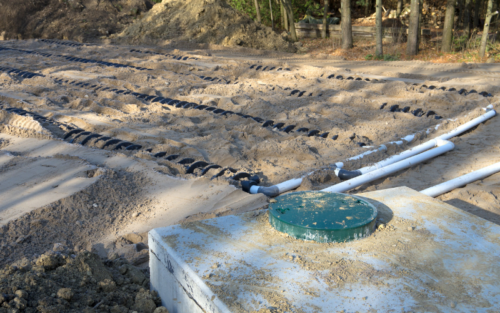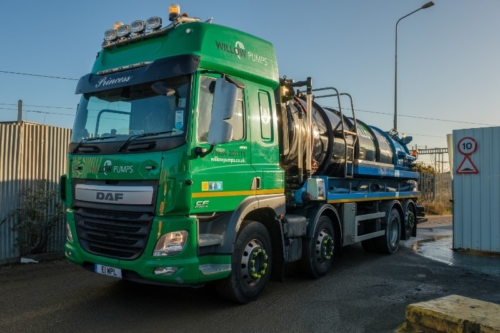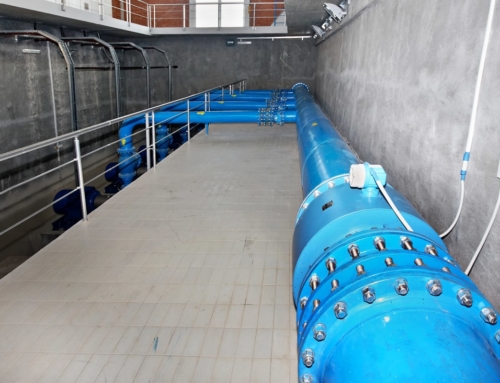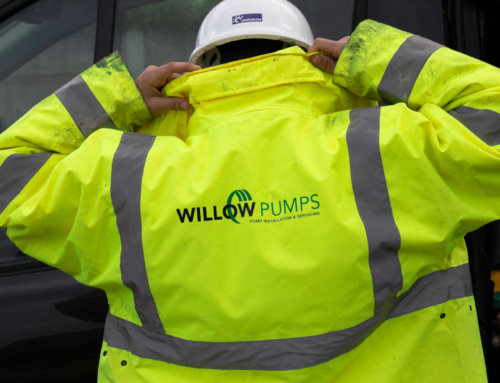 What is a Septic Tank Drainage Field?
What is a Septic Tank Drainage Field?
If your property isn’t connected to the mainline sewer system, when the toilets, sinks and showers on your business premises are used, wastewater flows into a septic tank located around six inches below the ground.
Once in the tank, wastewater transforms into three different layers – one of which is discharged to a septic tank drainage field.
Here, we discuss exactly how septic tank drainage fields work, how they benefit you as a business owner, and how they should be maintained to ensure your operations are never affected by them.
What is a Septic Tank Drainage Field?
A septic tank drainage field is an essential component of the septic system, as it helps treat and dispose of wastewater from septic tanks that service buildings not connected to the public sewer system.
Also known as a leach field, dispersal field or absorption field, septic tank drainage fields are located downstream of a septic tank and consist of a network of perforated pipes dug into gravel or a similarly porous material, known as subsoil.
How Do Septic Tank Drainage Fields Work?
When wastewater enters a septic tank, bacteria begin to naturally split the organic matter into three different layers –
- Scum – made up of floating materials
- Effluent – a liquid layer in the middle
- Sludge – settled solids which collect at the bottom
Once this natural separation process is complete, the liquid effluent is discharged from the septic tank into the drainage field, where it is distributed through the perforated pipes and subsoil.
Where are Septic Tank Drainage Fields Located?
While downstream of a septic tank, a well-designed septic tank drainage field should also be a safe distance from natural water courses. Septic tank drainage fields are also not suitable in some areas of the country, such as in groundwater source protection zones (SPZs). This helps prevent direct contamination of groundwater, which is a crucial source of drinking water.
Why are Septic Tank Drainage Fields Needed?
Septic tank drainage fields are vital to ensure wastewater is disposed of efficiently and safely. If it isn’t, it can cause pollution issues and be a risk to the health of humans and animals living nearby.
What Happens if a Septic Tank Drainage Field Becomes Blocked?
If a drainage field becomes obstructed or fails, it can result in a backup of wastewater, which overflows and creates unpleasant odours, as well as environmental pollution. To guarantee the effectiveness of a septic tank and its associated drainage field, routine inspections, maintenance, and responsible usage are crucial.
How Do Septic Tank Drainage Fields Prevent Pollution?
The drainage field is constructed to ensure wastewater is treated by aerobic bacteria, which thrive in these conditions. Aerobic bacteria perform most of the treatment of wastewater before it is discharged into the subsoil.
This natural filtration process taking place within the septic tank drainage field prevents pollution, as wastewater is treated before it reaches the environment. Having already had harmful bacteria, viruses and contaminants removed or diluted, they cause minimal harm.
How Should Septic Tank Drainage Fields Be Maintained?
Septic systems, including drainage fields, must function correctly to protect human and environmental health.
They should be inspected and maintained on a regular basis, and at Willow Pumps, we recommend this activity be undertaken annually. During inspection, levels of sludge and scum will be assessed, as well as monitoring for signs of clogs and blockages.
At Willow Pumps, we use our extensive septic tank knowledge alongside our top-of-the-range tankers to empty septic tanks, removing all contents and ensuring it’s safely discharged. By hiring a drainage and pump expert to maintain your septic system, you can also ensure your site continues to meet regulations and environmental standards.
Compliance and Septic Tank Drainage Fields
Operators of septic tanks, septic tank drainage fields and sewage treatment plants must abide by the regulations set out in the General Binding Rules.
You are responsible for meeting these regulations if:
- You own the property that uses the system (you are the operator)
- Your property shares the system with other properties (you are jointly responsible)
- You have an agreement with the owner of the property that you are responsible for the system, for example, you’re renting and it’s in your tenancy agreement
Regulations relate to the distance of the septic tank drainage field from other features; separation from other water supply pipes, accessibility, how water is discharged, maintenance, and Environment Agency permits.

Willow Pumps and Septic Tank Drainage Fields
Septic tanks offer an affordable, efficient and environmentally friendly solution to dealing with wastewater, but they require ongoing maintenance to ensure that they can store and process waste accordingly.
At Willow Pumps we offer a septic tank emptying service to ensure your tank and drainage field continue to operate at optimum levels.
Contact us today to get our expert opinion on how to care for your septic tank drainage field, and one of our experts will visit your site.







